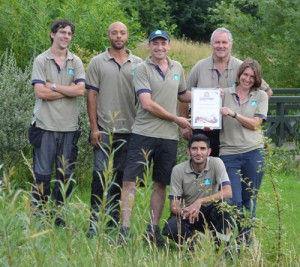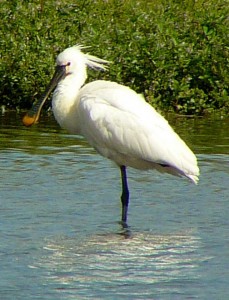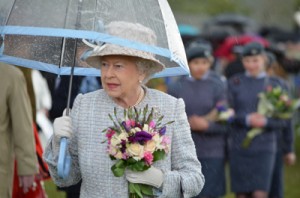Wetland wins and new arrivals: a review of 2012

2012 was an important year for WWT London Wetland Centre. We’re still a very young nature reserve, but there was a sense this year that we really are reaching our goals in terms of providing perfect wetland habitats for wildlife, giving city dwellers the chance to get close to nature, and educating the public about the importance of wetlands to wildlife and people.
We were thrilled to be voted Britain’s Favourite Nature Reserve by the public in Countryfile Magazine’s annual awards, particularly given our urban setting and our aforementioned comparative youth! We know from this, and the conversations we have with our visitors, just how important the Centre is for all sorts of people not just as a place to see wildlife up close, but also somewhere to come and relax away from the stresses of City life. We were also delighted to be able to extend our free school visits scheme to thousands of pupils from disadvantaged schools thanks to generous donations through WWT’s Inspiring Generations appeal.
We know how valuable the site has become for wildlife, from the wintering bitterns to the hundreds of bats finding food over the marsh and water bodies.

Notable species on site this year include Spoonbill and Great White Egret – statuesque wetland birds which both now breed in the UK. We saw our first Green Hairstreak butterfly on the reserve – a stunning insect rarely recorded in Greater London.
And a fifth orchid species flowered on site for the first time in August – the pretty Broad-leaved Helleborine. Orchids in general had a good year here, with a record number of Bee and Southern marsh flowering spikes.
It was a year for celebration, with a particular focus on London for several reasons. As part of the Queen’s Jubilee celebrations the Centre team had a stand at the Wild London event in Richmond Park. Some of our staff met the Queen – and we were also able to offer Her Majesty and the Duke of Edinburgh shelter in our small marquee during a violent hailstorm! And the Team GB ‘Gold Rush’ at the Olympics was apparently supported by one of our mallards, who hatched a ‘gold’ duckling – nicknamed Jessica Ennis by staff.
Back at the Centre, you can now meet top wetland predators – otters – in World Wetlands. The story of otters in the UK is a great example of how conservation can bring an animal back from the brink of extinction. Our otters are Asian short-clawed: a species facing its own difficulties in its native part of the world. The otters arrived in June and have proved very popular with visitors.

Not all our wildlife had a good year. The weather swung from drought to deluge and a wet spring will have had a huge impact on wildlife. Fewer flying insects meant that birds such as sand martins and warblers, and of course our local bats, struggled to find enough to eat. Emperor dragonflies suffered their worst year here since we started recording their numbers in 2000.
Find out about the effect the weather had on wildlife in 2012 in this BBC Breakfast report - featuring WWT London Wetland Centre.
We’re hoping better weather conditions in 2013 will help these animals recover. Birds and animals have strategies to cope with the odd bad season – many birds can rear second broods and amazingly bats can delay their pregnancies – and by continuing to provide them with a rich wetland habitat here in London we are doing all we can to support them.
Happy New Year!
Find out more about our nature reserve and wildlife
Follow us on Twitter
WWT London Wetland Centre on Facebook


